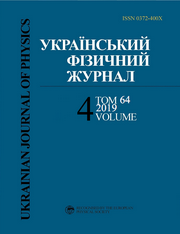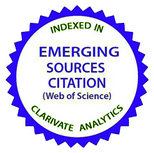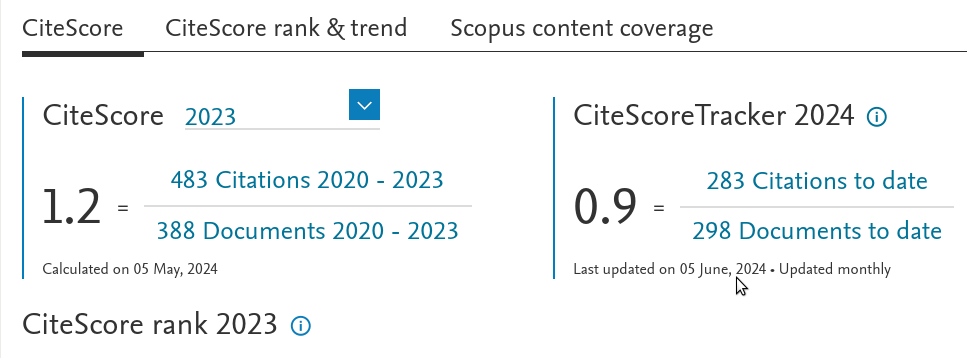Особливості переходів метал–ізолятор, багатошарове фазове розділення та пов’язані ефекти в купратах, легованих дірками
DOI:
https://doi.org/10.15407/ujpe64.4.322Ключові слова:
hole-doped cuprates, metal-insulator transitions, multiscale phase separation, doping-dependent electronic propertiesАнотація
Вивчаються особливостi переходiв метал–iзолятор, багатошарове фазове роздiлення та еволюцiя спiвiснуючих iзоляцiйних та металевих/надпровiдних фаз у купратах, легованих дiрками. Ми показуємо, як цi взаємопов’язанi явища i пов’язанi з ними ефекти проявляються в широкому дiапазонi вiд низького до оптимального легування цих систем, де локалiзованi i рухомi носiї дiрок знаходяться в бiдних (iзолюючих) i багатих на дiрки (металевi або надпровiднi) областях. Ми стверджуємо, що невеликi дiлянки багатi на дiрки (тобто вузькi нанорозмiрнi металевi острови або смуги) можуть зберiгатися в iзолюючiй фазi слабо легованих купратiв, тодi як конкуруючi iзоляцiйнi, металевi та надпровiднi фази будуть спiвiснувати в слабо легованих купратах. Коли рiвень легування збiльшується далi, дiлянки бiднi на дiрки (або iзолюючi зони) поступово звужуються вiд макро- до нанорозмiрних iзолюючих смуг i зникають в оптимально легованих купратах. Наочно продемонстровано, що переходи метал–iзолятор i спiвiснуючi iзоляцiйнi та металевi/надпровiднi фази проявляються в пригнiченнi надпровiдностi в слабо легованих купратах та в рiзнiй температурно-залежнiй поведiнцi магнiтної сприйнятливостi i опору в напрямку с-осi для купратiв в iнтервалi вiд низького до оптимального рiвня легування.
Посилання
M. Imada, A. Fujimori, Y. Tokura. Metal-insulator transitions. Rev. Mod. Phys. 70, 1039 (1998). https://doi.org/10.1103/RevModPhys.70.1039
P.A. Lee, N. Nagaosa, X.-G.Wen. Doping a Mott insulator: Physics of high-temperature superconductivity. Rev. Mod. Phys. 78, 17 (2006). https://doi.org/10.1103/RevModPhys.78.17
S. Dzhumanov. Theory of Conventional and Unconventional Superconductivity in the High-Tc Cuprates and Other Systems (Nova Science Publishers, 2013).
A.N. Lavrov, V.F. Gandmakher. Low-temperature resistivity of underdoped cuprates. Phys. Usp. 41, 223 (1998). https://doi.org/10.1070/PU1998v041n02ABEH000371
M.A. Kastner, R.J. Birgeneau, G. Shirane, Y. Endoh. Magnetic, transport, and optical properties of monolayer copper oxides. Rev. Mod. Phys. 70, 897 (1998). https://doi.org/10.1103/RevModPhys.70.897
T. Timusk, B. Statt. The pseudogap in high-temperature superconductors: an experimental survey. Rep. Prog. Phys. 62, 61 (1999). https://doi.org/10.1088/0034-4885/62/1/002
S. Dzhumanov. The dependence of Tc on carrier concentration in high-Tc superconductors. Superlatt. Micros. 21, 363 (1997). https://doi.org/10.1006/spmi.1996.0401
S. Dzhumanov, O.K. Ganiev, Sh.S. Djumanov. Pseudogap formation and unusual quasiparticle tunneling in cuprate superconductors: Polaronic and multiple-gap effects on the tunneling spectra. Phys. B 427, 22 (2013). https://doi.org/10.1016/j.physb.2013.06.027
F.Walz. The Verwey transition - a topical review. J. Phys.: Condens. Matter 14, R285 (2002). https://doi.org/10.1088/0953-8984/14/12/203
J. Bardeen, L.N. Cooper, J.R. Schrieffer. Theory of super-conductivity. Phys. Rev. 108, 1175 (1957). https://doi.org/10.1103/PhysRev.108.1175
J. Zaanen. Self-organized one dimensionality. Science 286, 251 (1999). https://doi.org/10.1126/science.286.5438.251
C. Castellani, C. Di Casto, M. Grilli. Stripe formation: A quantum critical point for cuprate superconductors. J. Phys. Chem. Solids 59, 1694 (1998). https://doi.org/10.1016/S0022-3697(98)00085-7
K.A. M?uller, G.-M. Zhao, K. Conder, H. Keller. The ratio of small polarons to free carriers in La2?xSrxCuO4 derived from susceptibility measurements. J. Phys.: Condens. Matter 10, L291 (1998). https://doi.org/10.1088/0953-8984/10/18/001
N.L. Saini, A. Lanzara, A. Bianconi, D. Law, A. Menovsky, K.B. Garg, H. Oyanagi. Decrease of itinerant holes near the metal to insulator crossover in superconducting La1.85Sr0.15CuO4. J. Phys. Soc. Jpn. 67, 393 (1998). https://doi.org/10.1143/JPSJ.67.393
S.A. Kivelson, I. Bindloos, E. Fradkin, V. Oganesyan, J. Tranquada, A. Kapitulnic, C. Howard. How to detect fluctuating stripes in the high-temperature superconductors. Rev. Mod. Phys. 75, 1201 (2003). https://doi.org/10.1103/RevModPhys.75.1201
G. Campi, A. Bianconi, N. Poccia, G. Bianconi, L. Barba, G. Arrighetti, D. Innoceti, J. Karpinski, N.D. Zhigadlo, S.M. Kazakov, M. Burghammer, M.V. Zimmermann, M. Sprung, A. Ricci. Inhomogeneity of charge-density-wave order and quenched disorder in a high-Tc superconductor. Nature 525, 359 (2015). https://doi.org/10.1038/nature14987
A. Ino, C. Kim, M. Nakamura, T. Yoshida, T. Mizokawa, Z.-X. Shen, A. Fujimori, T. Kakeshita, H. Eisaki, S. Uchida. Electronic structure of La2?xSrxCuO4 in the vicinity of the superconductor-insulator transition. Phys. Rev. B 62, 4137 (2000). https://doi.org/10.1103/PhysRevB.62.4137
N.V. Anshukova, A.I. Golovashkin, L.I. Ivanova, A.P. Rusakov. The effect of superstructural ordering on the properties of high-temperature oxide superconductor systems. J. Exp. Theor. Phys 96, 1045 (2003). https://doi.org/10.1134/1.1591216
S.I. Vedeneev. High-temperature superconductors in high and ultrahigh magnetic fields. Phys. Usp. 55, 625 (2012). https://doi.org/10.3367/UFNe.0182.201206h.0669
L. Forro. Out-of-plane resistivity of Bi2Sr2CaCu2O8+x high temperature superconductor. Phys. Lett. A 179 (2), 140 (1993). https://doi.org/10.1016/0375-9601(93)90664-L
S. Ono, Yoichi Ando, T. Murayama, F.F. Balakirev, J.B. Betts, G.S. Boebinger. Metal-to-insulator crossover in the low-temperature normal state of Bi2Sr2?xLaxCuO6+б. Phys. Rev. Lett. 85, 638 (2000). https://doi.org/10.1103/PhysRevLett.85.638
T. Nakano, M. Oda, C. Manabe, N. Momono, Y. Miura, M. Ido. Magnetic properties and electronic conduction of superconducting La2?xSrxCuO4. Phys. Rev. B 49, 16000 (1994). https://doi.org/10.1103/PhysRevB.49.16000
S. Komiya, Y. Ando, X.F. Sun, A.N. Lavrov. c-axis transport and resistivity anisotropy of lightly to moderately doped La2?xSrxCuO4 single crystals: Implications on the charge transport mechanism. Phys. Rev. B 65, 214535 (2002). https://doi.org/10.1103/PhysRevB.65.214535
Sh. Sakita, F. Nakamura, T. Suzuki, T. Fujita. Structural transitions and localization in La2?x?yNdySrxCuO4 with p ? 1/8. J. Phys. Soc. Jpn. 68, 2755 (1999). https://doi.org/10.1143/JPSJ.68.2755
Y. Koike, M. Akoshima, M. Aoyama, K. Nishimaki, T. Kawamata, T. Adachi, T. Noji, M. Kato, I.Watanabe, S. Ohira, W. Higemoto, K. Nagamine, H. Kimura, K. Hirota, K. Yamada, Y. Endoh. Cu-site-substitution effects on the 1/8 anomaly in the high-Tc cuprates and on the anomaly at x = 0.21 in La2?xSrxCuO4. Phys. C 357-360, 82 (2001). https://doi.org/10.1016/S0921-4534(01)00199-X
D. Pines. Spin fluctuations and dx2?y2 pairing in the high temperature superconductors. Tr. J. Phys. 20, 535 (1996).
B.P. Stojkovic, D. Pines. Theory of the longitudinal and Hall conductivities of the cuprate superconductors. Phys. Rev. B 55, 8576 (1997). https://doi.org/10.1103/PhysRevB.55.8576
A.A. Abrikosov. Resonant tunneling in high-Tc superconductors. Phys. Usp. 41, 605 (1998). https://doi.org/10.1070/PU1998v041n06ABEH000411
B. Sac?ep?e, T. Dubouchet, C. Chapelier, M. Sanquer, M. Ovadia, D. Shahar, M. Feigel'man, L. Ioffe. Localization of preformed Cooper pairs in disordered superconductors. Nat. Phys. 7, 239 (2011). https://doi.org/10.1038/nphys1892
B.K. Chakraverty, A. Avignon, D. Feinberg. Understanding high temperature superconducting oxides. J. Less-Common Metals 150, 11 (1989). https://doi.org/10.1016/0022-5088(89)90252-X
D. Emin, M.S. Hillery. Formation of a large singlet bipolaron: Application to high-temperature bipolaronic superconductivity. Phys. Rev. B 39, 6575 (1989). https://doi.org/10.1103/PhysRevB.39.6575
J.T. Devrees, A.S. Alexandrov. Fr?ohlich polaron and bipolaron: Recent developments. Rep. Prog. Phys. 72, 066501 (2009). https://doi.org/10.1088/0034-4885/72/6/066501
S. Dzhumanov, P.J. Baimatov, A.A. Baratov, P.K. Khabibullaev. The continuum theory of delocalized and self-trapped polarons and bipolarons in solids. Phys. C 254, 311 (1995). https://doi.org/10.1016/0921-4534(95)00446-7
L.P. Gor'kov, A.V. Sokol. Phase stratification of an electron liquid in the new superconductors. JETP Lett. 46 (8), 420 (1987).
J. Zaanen, O. Gunnarsson. Charged magnetic domain lines and the magnetism of high-Tc oxides. Phys. Rev. B 40, 7391 (1989). https://doi.org/10.1103/PhysRevB.40.7391
V.J. Emery, S. Kivelson, O. Zachar. Spin-gap proximity effect mechanism of high-temperature superconductivity. Phys. Rev. B 56, 6120 (1997). https://doi.org/10.1103/PhysRevB.56.6120
K.A. M?uller. Recent experimental insights into HTSC materials. Phys. C 341, 11 (2000). https://doi.org/10.1016/S0921-4534(00)00379-8
L.P. Gor'kov. Inherent inhomogeneity in two-component model for cuprates. J. Supercond. 14, 365 (2001).
V.V. Kabanov. Polarons: From single polaron to short scale phase separation. arXiv: cond-mat/0611174.
S. Dzhumanov, O.K. Ganiev, Sh.S. Djumanov. Normal-state conductivity of underdoped to overdoped cuprate superconductors: Pseudogap effects on the in-plane and c-axis charge transports. Phys. B 440, 17 (2014). https://doi.org/10.1016/j.physb.2014.01.017
P.W. Anderson. Present status of the theory of the high-Tc cuprates. Low Temp. Phys. 32, 282 (2006). https://doi.org/10.1063/1.2199427
M. Eschring. The effect of collective spin-1 excitations on electronic spectra in high-Tc superconductors. Adv. Phys. 55, 47 (2006). https://doi.org/10.1080/00018730600645636
C.M. Varma. High-temperature superconductivity: Mind the pseudogap. Nature 468, 184 (2010). https://doi.org/10.1038/468184a
Yu. A. Nepomnyashchii, E.Ya. Pashitskii. Superfluid Bose liquid with intense bose pair condensate. JETP 98, 178 (1990).
V.L. Vinetskii, N.I. Kashirina, and E.A. Pashitskii. Bipolaron states in ion crystals and the problem of high temperature superconductivity. Ukr. J. Phys. 37, 76 (1992).
N.L. Kashirina, V.D. Lakhno, V.V. Sychyov. Correlation effects and Pekar bipolaron (arbitrary electron-phonon interaction). Phys. Stat. Sol. B 239, 174 (2003). https://doi.org/10.1002/pssb.200301818
Ch.B. Lushchik, A.Ch. Lushchik. Decay of Electronic Excitations with Defect Formation in Solids (Nauka, 1989) (in Russian).
S. Dzhumanov, P.K. Khabibullaev. The coexistence of unstable, metastable, and separated Frenkel pair defects in solids. III. Theory of the non-impact mechanisms for defect formation in non-metals. Phys. Stat. Sol. B 152, 395 (1989). https://doi.org/10.1002/pssb.2221520203
S. Sugai. Local distortion specifying the superconductor phases observed by Raman scattering. Phys. C 185-189, 76 (1991). https://doi.org/10.1016/0921-4534(91)91953-2
F.M. Peeters, J.T. Devreese, G. Verbist. Possible (bi) polaron effects in the high-tc superconductors. Phys. Scrip. T 39, 66 (1991). https://doi.org/10.1088/0031-8949/1991/T39/007
X.X. Bi, P.C. Eklund. Polaron contribution to the infrared optical response of La2?xSrxCuO4+б and La2?xSrxNiO4+б. Phys. Rev. Lett. 70, 2625 (1993). https://doi.org/10.1103/PhysRevLett.70.2625
A. Ino, C. Kim, M. Nakamura, T. Yoshida, T. Mizokawa, A. Fujimori, Z-X Shen, T. Kakeshita, H. Eisaki, S. Uchida. Doping-dependent evolution of the electronic structure of La2?xSrxCuO4 in the superconducting and metallic phases Phys. Rev. B 65, 094504 (2002). https://doi.org/10.1103/PhysRevB.65.094504
D.N. Basov, T. Timusk. Electrodynamics of high-Tc superconductors Rev. Mod. Phys. 77, 721 (2005). https://doi.org/10.1103/RevModPhys.77.721
S. Dzhumanov, P.J. Baimatov, O.K. Ganiev, Z.S. Khudayberdiev, B.V. Turimov. Possible mechanisms of carrier localization, metal-insulator transitions and stripe formation in inhomogeneous hole-doped cuprates. J. Phys. Chem. Solid. 73, 484 (2012). https://doi.org/10.1016/j.jpcs.2011.11.029
M. Le Tacon, A. Bosak, S.M. Souliou, G. Dellea, T. Loew, R. Heid, K-P Bohnen, G. Ghiringhelli, M. Krisch, B. Keimer. Giant phonon anomalies and central peak due to charge density wave formation in YBa2Cu3O6.6 Nat. Phys. 10, 52 (2014). https://doi.org/10.1038/nphys2805
E.M. Forgan, E. Blakburn, A.T. Holmes, A.K.R. Briffa, J. Chang, L. Bouchenoire, S.D. Brown, L. Ruixing, D. Bonn, W.N. Hardy, N.B. Christensen, M.V. Zimmermann, M. Hucker, S.M. Hayden. The microscopic structure of charge density waves in underdoped YBa2Cu3O6.54 revealed by X-ray diffraction. Nat. Commun. 6, 10064 (2015). https://doi.org/10.1038/ncomms10064
M. Miao, D. Ishikawa, R. Heid, M. LeTakon, G. Fabbris, D. Meyers. Incommensurate phonon anomaly and the nature of charge density waves in cuprates. Phys. Rev. X 8, 011008 (2018). https://doi.org/10.1103/PhysRevX.8.011008
T. Kato, T. Noguchi, R. Saito, T. Machida, H. Sakata. Gap distribution in overdoped La2?xSrxCuO4 observed by scanning tunneling spectroscopy. Phys. C 460-462, 880 (2007). https://doi.org/10.1016/j.physc.2007.03.129
A.V. Puchkov, D.N. Basov, T. Timusk. The pseudogap state in high-Tc superconductors: An infrared study J. Phys: Condens. Matt. 8, 10049 (1996). https://doi.org/10.1088/0953-8984/8/48/023
Yu.A. Izyumov, N.M. Plakida, Yu.N. Skryabin. Magnetism in high-temperature superconducting compounds. Usp. Fiz. Nauk. 159, 621 (1989). https://doi.org/10.3367/UFNr.0159.198912b.0621
J. Fink, N. Nucker, M. Alexander, H. Romberg, M. Knupeer, M. Merkel, P. Adelmann, R. Claessen, G. Mante, T. Buslaps, S. Harm, R. Manzke, M. Skibowski. High-energy spectroscopy studies of high-Tc superconductors. Phys. C 185-189, 45 (1991). https://doi.org/10.1016/0921-4534(91)91948-4
S. Ono, Y. Ando, T. Murayama, F.F. Balakirev, J.B. Betts, G.S. Boebinger. Low-temperature normal state of Bi2Sr2?xLaxCuO6+б: Comparison with La2?xSrxCuO4. Phys. C 357-360, 138 (2001). https://doi.org/10.1016/S0921-4534(01)00187-3
A.L. Solovjov, H.-U. Habermeier, T. Haage. Fluctuation conductivity in Y-Ba-Cu-O films with artificially produced defects . Fiz. Nizk. Temp. 28, 144 (2002) [Low Temp. Phys. 28, 99 (2002)]. https://doi.org/10.1063/1.1528572
A. Lanzara, P.V. Bogdanov, X.J. Zhou, S.A. Kellar, D.L. Feng, E.D. Lu, T. Yoshida, H. Eisaki, A. Fujimori, K. Kishio, J.-I. Shimoyama, T. Moda, S. Uchida, Z. Hussain, Z.-X. Shen. Evidence for ubiquitous strong electron-phonon coupling in high-temperature superconductors. Nature 412, 510 (2001). https://doi.org/10.1038/35087518
P.W. Anderson. The Theory of Superconductivity in the High-Tc Cuprates (Princeton Univ. Press, 1997).
J.L. Tallon, J.W. Loram, J.R. Cooper, C. Panagopoulos, C. Bernhard. Superfluid density in cuprate high-Tc superconductors: A new paradigm. Phys. Rev. B 68, 180501 (2003). https://doi.org/10.1103/PhysRevB.68.180501
N. Ichikawa, S. Uchida, J.M. Tranquada, T. Niem?oller, P.M. Gehring, S.-H. Lee, J.R. Schneider. Local magnetic order vs superconductivity in a layered cuprate. Phys. Rev. Lett. 85, 1738 (2000). https://doi.org/10.1103/PhysRevLett.85.1738
P.B. Allen, Z. Fisk, A. Migliori. Normal state transport and elastic properties of high-Tc materials and related compounds. In: Physical Properties of High Temperature Superconductors I. Edited by D.M. Ginsberg (World Scientific, 1988), Chapter 5.
A.S. Alexandrov, V.V. Kabanov. Parameter-free expression for superconducting Tc in cuprates. arXiv:condmat/9903071.
D.M. Eagles. Possible pairing without superconductivity at low carrier concentrations in bulk and thin-film superconducting semiconductors. Phys. Rev. 186, 456 (1969). https://doi.org/10.1103/PhysRev.186.456
S. Dzhumanov, E.X. Karimboev, Sh.S. Djumanov. Underlying mechanisms of pseudogap phenomena and Bose-liquid superconductivity in high-Tc cuprates. Phys. Lett. A 380, 2173 (2016). https://doi.org/10.1016/j.physleta.2016.04.038
S. Dzhumanov, E.K. Karimboev. Competing pseudogap and impurity effects on the normal-state specific heat properties of cuprate superconductors. Phys. A 406, 176 (2014). https://doi.org/10.1016/j.physa.2014.03.046
M. Houssa, M. Ausloos. Thermal conductivity of high-Tc superconductors: effect of Van Hove singularities. Phys. C 265, 258 (1996). https://doi.org/10.1016/0921-4534(96)00304-8
L. Ping. Possible origin of the broad peak around 450 cm?1 of the c-axis optical conductivity of the underdoped YBa2Cu3O6+x in the superconducting state. Phys. Rev. B 65, 214511 (2002). https://doi.org/10.1103/PhysRevB.65.214511
J.W. Loram, K.A. Mirza, J.R. Cooper. Properties of the superconducting condensate and the normal state pseudo-gap in high Tc cuprates derived from the electronic specific heat. IRC Res. Rev. 3, 77 (1998).
M. Roulin, B. Revaz, A. Junod, A. Erb, E. Walker. High resolution specific heat experiments on the vortex melting line in MBa2Cu3Ox (M = Y, Dy and Eu) crystals: Observation of first- and second-order transitions up to 16T. In: Physics and Materials Science of Vortex States, Flux Pinning and Dynamics. Edited by R. Kossowsky, S. Bose, Z. Durusoy, V. Pan, (Springer, 1999), p. 489. https://doi.org/10.1007/978-94-011-4558-9_22
S. Tajima, J. Sch?utzmann, S. Miyamoto et al. Optical study of c-axis charge dynamics in YBa2Cu3Oy:nn Carrier self-confinement in the normal and the superconducting states. Phys. Rev. B 55, 6051 (1997). https://doi.org/10.1103/PhysRevB.55.6051
Downloads
Опубліковано
Як цитувати
Номер
Розділ
Ліцензія
Ліцензійний Договір
на використання Твору
м. Київ, Україна
Відповідальний автор та співавтори (надалі іменовані як Автор(и)) статті, яку він (вони) подають до Українського фізичного журналу, (надалі іменована як Твір) з одного боку та Інститут теоретичної фізики імені М.М. Боголюбова НАН України в особі директора (надалі – Видавець) з іншого боку уклали даний Договір про таке:
1. Предмет договору.
Автор(и) надає(ють) Видавцю безоплатно невиключні права на використання Твору (наукового, технічного або іншого характеру) на умовах, визначених цим Договором.
2. Способи використання Твору.
2.1. Автор(и) надає(ють) Видавцю право на використання Твору таким чином:
2.1.1. Використовувати Твір шляхом його видання в Українському фізичному журналі (далі – Видання) мовою оригіналу та в перекладі на англійську (погоджений Автором(ами) і Видавцем примірник Твору, прийнятого до друку, є невід’ємною частиною Ліцензійного договору).
2.1.2. Переробляти, адаптувати або іншим чином змінювати Твір за погодженням з Автором(ами).
2.1.3. Перекладати Твір у випадку, коли Твір викладений іншою мовою, ніж мова, якою передбачена публікація у Виданні.
2.2. Якщо Автор(и) виявить(лять) бажання використовувати Твір в інший спосіб, як то публікувати перекладену версію Твору (окрім випадку, зазначеного в п. 2.1.3 цього Договору); розміщувати повністю або частково в мережі Інтернет; публікувати Твір в інших, у тому числі іноземних, виданнях; включати Твір як складову частину інших збірників, антологій, енциклопедій тощо, то Автор(и) мають отримати на це письмовий дозвіл від Видавця.
3. Територія використання.
Автор(и) надає(ють) Видавцю право на використання Твору способами, зазначеними у п.п. 2.1.1–2.1.3 цього Договору, на території України, а також право на розповсюдження Твору як невід’ємної складової частини Видання на території України та інших країн шляхом передплати, продажу та безоплатної передачі третій стороні.
4. Строк, на який надаються права.
4.1. Договір є чинним з дати підписання та діє протягом усього часу функціонування Видання.
5. Застереження.
5.1. Автор(и) заявляє(ють), що:
– він/вона є автором (співавтором) Твору;
– авторські права на даний Твір не передані іншій стороні;
– даний Твір не був раніше опублікований і не буде опублікований у будь-якому іншому виданні до публікації його Видавцем (див. також п. 2.2);
– Автор(и) не порушив(ли) права інтелектуальної власності інших осіб. Якщо у Творі наведені матеріали інших осіб за виключенням випадків цитування в обсязі, виправданому науковим, інформаційним або критичним характером Твору, використання таких матеріалів здійснене Автором(ами) з дотриманням норм міжнародного законодавства і законодавства України.
6. Реквізити і підписи сторін.
Видавець: Інститут теоретичної фізики імені М.М. Боголюбова НАН України.
Адреса: м. Київ, вул. Метрологічна 14-б.
Автор: Електронний підпис від імені та за погодження всіх співавторів.

















